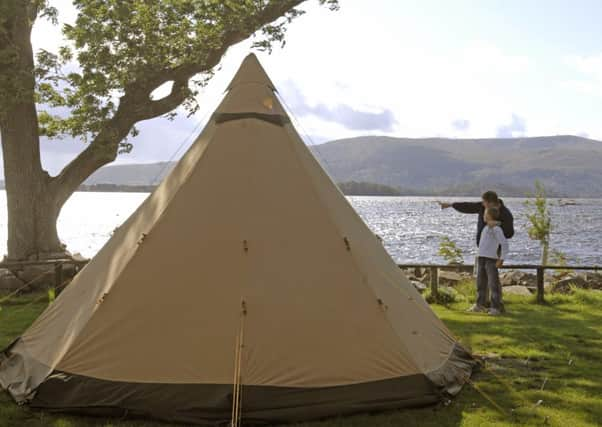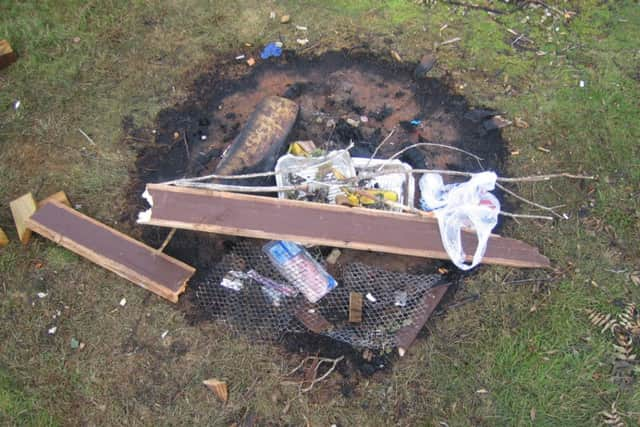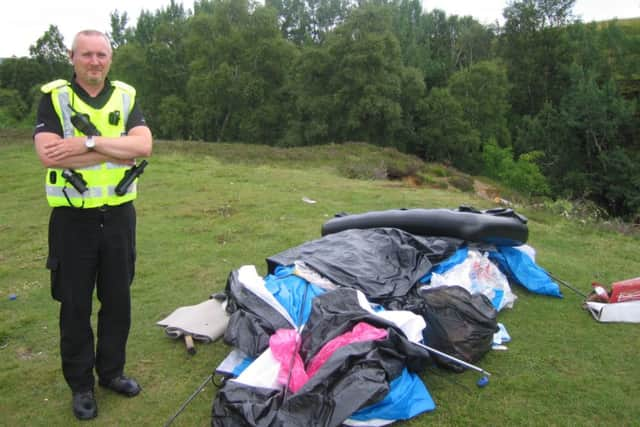Loch shore camping under threat from park bosses


The Loch Lomond and The Trossachs National Park Authority says some of its most popular beauty spots are being “progressively degraded” by an element of visitors who act irresponsibly.
The results include abandoned tents and camping equipment, fishing tackle, bottles, broken glass, food and packaging - and even human waste.
Advertisement
Hide AdAdvertisement
Hide AdOfficials will tell the board on Monday that while visitor expectations from around the world are that a national park should showcase the best standards of care for the area’s natural beauty and a “high quality visitor experience”, some locations “are a long way from achieving such an aspiration”.


“A very popular recreational activity for many decades”
Although camping on the shores of the lochs has been a “very popular recreational activity for many decades”, as it is largely unmanaged, this has resulted in many of the shores becoming “degraded and unattractive” for other visitors.
They say unless positive action is taken, the issue will continue to damage the park’s - and Scotland’s - reputation as a highly desirable place to visit.
In his report for Monday’s meeting, director of operations Gordon Watson, said: “The National Park Authority has been recording evidence over many years of the entrenched problems experienced during the summer season at other ‘hot spot’ locations in the wider Park area.


“These are where popular lochshores are easily accessible from a public road meaning they attract very high levels of car-borne camping use.
“Such heavy usage is causing environmental damage through loss of vegetation and habitats.
Antisocial and irresponsible behaviour
“This is significantly compounded by the antisocial and irresponsible behaviour of some visitors who leave behind significant amounts of litter, human waste, make excessive noise or behave in a way which intimidates visitors and residents.”
The latest proposals combine significant enhancements to the existing, dedicated camping provisions and by-laws on the park’s most overused lochshores - including west Loch Lomond and the wider Trossachs lochs.
Advertisement
Hide AdAdvertisement
Hide AdWild camping was forbidden by a new byelaw in 2009, coming into effect in 2010, on the East shores of Loch Lomond.
In March 2014, the National Park Authority approved a report reviewing the first three years of the operation of the East Loch Lomond Camping Byelaw which found that reports of vandalism and antisocial behaviour were down 81 per cent.
The camping byelaw in East Loch Lomond included investing in new facilities such as parking, camping and toilets at Sallochy Bay, significant ranger and Police patrolling presence, a campaign delivering focused responsible behaviour messages, as well as the introduction of byelaws to regulate where camping takes place.
The latest proposals would include a slight extension to the camping management zone on the east shores.
“Your Park” project
The board will discuss the “Your Park” project - developed because of growing evidence of serious problems ranging from litter and fire damage to abandonment of entire campsites and summer-long caravan encampments in laybys.
The proposals are in response to a call for action from communities in the worst affected areas and build on measures which have been successfully dealt with similar issues in east Loch Lomond.
If officials’ proposals are approved by the board, a 12-week consultation would begin on 13th October.
Following its completion, and having considered responses, the National Park Authority is required to formally submit the byelaw proposal to Scottish Ministers for consideration.
Advertisement
Hide AdAdvertisement
Hide AdAt this stage a further 28-day consultation would take place with responses being considered by Scottish Ministers prior to any Ministerial decision.
Gordon Watson said: “The considerable resources that already go into managing these issues have not delivered sufficient behaviour change and cannot control the sheer volume of people camping in these fragile locations.
‘The shared success of our east Loch Lomond initiative’
“The shared success of our east Loch Lomond initiative has shown that a package of measures can transform the area for visitors, residents, local businesses, and restore the environment to its former glory.
“Through investing in facilities and deterring anti-social behaviour the same successful transformation can be achieved in the other pressured areas.”
However, Mr Watson states in his report that wild-camping will largely remain unaffected.
He said: “In total the proposed management zones (including the existing east Loch Lomond area) will cover less than 5 per cent of the National Park’s 720 square miles, ensuring minimal impact on the right to responsibly true wild camp across the majority of the park area away from busier roadside locations.”
SEE ALSO: